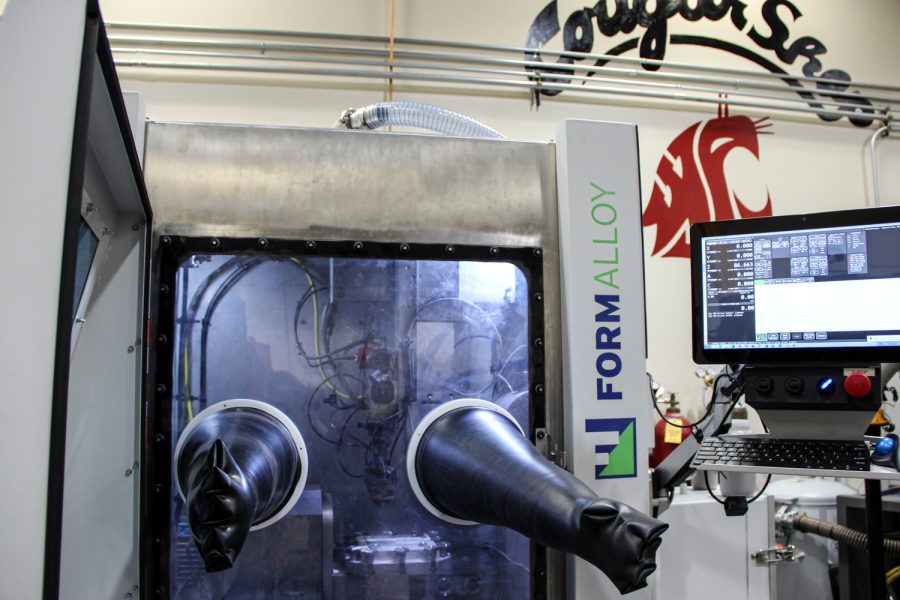Martian dust may provide key to colonization of Mars
Researchers aim to create Martian-rock metal with titanium, Martian dust
A Formalloy machine performs directed energy deposition additive manufacturing, Sep. 19.
September 23, 2022
From Martian dust and metal powder, WSU may be able to 3D print metal and potentially pave the way for lunar missions and the colonization of Mars.
The Martian dust is not actual dust procured from Mars but is a lunar regolith, or earth-based material. The dust has the same composition as the mimicked material and allows researchers to determine the potential of 3D printing on Mars, said Amit Bandyopadhyay, professor at the School of Mechanical and Materials Engineering.
“It is a dust that has a different level of ceramic compositions, based on the compositions that our Curiosity and other Martian rovers … have found,” Bandyopadhyay said. “Our forte is 3D printing and coming up with this metal ceramics, or structures, as opposed to the raw material, [which] we procure from external sources.”
He said 3D printing could allow scientists to create materials in space and on lunar or Martian surfaces without transporting materials from Earth, which is helpful if rockets need materials in an emergency situation. It could also reduce the cost of space missions, as sending materials into space is expensive.
The project focuses on using Martian powder and titanium metal powder to create a Martian-rock metal, according to a WSU Insider article.
“We want to make something useful out of [the regolith],” said Ali Afrouzian, a post-doctorate candidate in mechanical engineering. “That is really where this whole idea started. Can we use some metal and mix it with this regolith powder and create something that can make a screwdriver or a structural component [replacement] in case we need it?”
There is no projected goal, as Bandyopadhyay views the project as fundamental or visionary. He hopes the success of this project will pave the way for other researchers and could contribute to the mission to colonize Mars.
“Our main hope is [to] see more of such activities in other places,” Bandyopadhyay said. “Five or ten years from today, I hope more people will be doing similar work. That is a huge success.”
Afrouzian is focusing on two research goals: manufacturability and use of resources in space. He hopes to 3D print stronger material with fewer defects, like cracks.
Martian-rock metal is created by mixing 5-10% of Martian dust with 90-95% titanium metal, having a higher resistance to stress. In contrast, homogenous Martian material was weaker and easily cracked, Afrouzian said.
“The reason we made different compositions is that we wanted to [experiment],” he said. “With the additional five percent, we improved the mechanical properties significantly, in terms of hardness.”
The Martian dust and titanium metal powder gather toward the focal of the laser. The laser melts the titanium metal powder and allows other elements in the dust to mix with the metal. The result is a Martian-rock metal with titanium and ceramic or Martian regolith reinforcement, Afrouzian said.
The second focus is the use of resources in space. Afrouzian hopes to use the resources on lunar and Martian surfaces to manufacture different materials on Mars. It would reduce the cost of material transportation from Earth to Mars and also provide more convenience in the case of an emergency, he said.
Bandyopadhyay said the project is in its beginning stage, and hopes other researchers will also take on the research in the future.
“If we see another 10 or 20 groups following what we are doing and taking it to a level we could not, that is a huge success because, at the end of the day, we got to develop these technological abilities,” he said.










